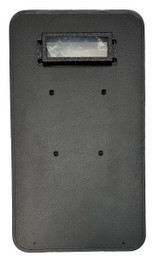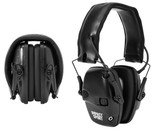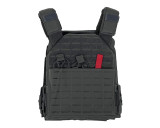Mastering Plate Carriers: Types and Proper Usage
Mastering Plate Carriers: Types and Proper Usage
In the world of tactical gear, few items are as iconic and essential as the plate carrier. These versatile pieces of equipment not only provide protection but also offer a platform for carrying critical gear. This article delves into the realm of plate carriers, exploring the various types available and providing readers with insights into their proper usage, ensuring that they become an invaluable asset for anyone navigating high-risk situations.
Understanding Plate Carriers
A plate carrier is more than just a piece of gear; it's a crucial element in an operator's arsenal. Designed to hold ballistic plates that provide protection against various projectiles, plate carriers have evolved to become more than just armor. They're engineered to evenly distribute the weight of the plates and gear, ensuring that mobility is not compromised during critical operations.
Types of Plate Carriers
Plate carriers come in various styles to suit different needs. Minimalist carriers are lightweight and streamlined, offering essential protection without hindering movement. Modular carriers allow for customization by attaching pouches, holsters, and panels. Tactical vests, with integrated pouches, are perfect for rapid access to equipment. Choosing the right type depends on the mission and personal preferences.
Ballistic Plates: The Backbone of Protection
The heart of any plate carrier is the ballistic plates themselves. These rigid inserts provide armor against bullets and projectiles. Plates are made from different materials, each with its advantages. Steel plates are durable but heavy, ceramic plates offer excellent protection without excessive weight, and composite plates strike a balance between the two. Selecting the right type of plate is critical to achieving the desired protection and performance.
Proper Sizing and Fit
Regardless of how advanced a plate carrier is, it's only effective if it fits properly. A poorly fitting carrier can hinder movement and compromise protection. Achieving the correct fit involves measuring accurately and adjusting the carrier's straps, cummerbund, and side panels to ensure a secure and comfortable fit. Proper sizing and fit are the foundation of effective plate carrier usage.
Basic Usage: Wearing the Plate Carrier
Donning a plate carrier might seem straightforward, but proper technique is crucial to ensuring maximum protection and comfort. Step-by-step instructions for putting on the carrier, adjusting the shoulder straps, securing the cummerbund, and fine-tuning the fit guarantee that the carrier stays in place during dynamic movements.
Adding Accessories and Pouches
The versatility of plate carriers extends beyond protection. Pouches, holsters, and accessories can be added to customize the carrier to individual needs. Understanding the placement of pouches and gear is essential to maintaining balance and quick access to critical items.
Modular Plate Carriers: Flexibility and Adaptability
Modular plate carriers take customization to the next level. Panels, pouches, and additional armor can be added or removed based on the mission's requirements. This adaptability allows operators to configure their gear setup for maximum efficiency, ensuring that they're prepared for any situation.
Maintenance and Cleaning
A plate carrier is an investment, and proper care is essential for its longevity. Regular maintenance includes cleaning, inspecting for wear and tear, and ensuring that straps and fasteners are in good condition. A well-maintained carrier guarantees that it remains a reliable asset in the long run.
Weight Distribution and Mobility
A well-designed plate carrier evenly distributes the weight of the plates and gear, preventing discomfort during extended wear. Adjusting straps to achieve proper weight distribution is crucial for maintaining mobility and endurance during operations.
Training and Familiarization
Owning a plate carrier is just the first step. Regular training sessions are necessary to become proficient in wearing, adjusting, and using the carrier effectively. Familiarity with the gear ensures that it becomes an extension of the operator, enhancing their performance in high-pressure situations.
Conclusion: Your Partner in Protection and Preparedness
Plate carriers are more than armor; they're platforms for readiness and versatility. By understanding the different types, ensuring proper fit, and mastering customization options, individuals can harness the full potential of plate carriers. These pieces of gear become trusted companions in environments where safety and performance are paramount, ensuring that those who wear them are always prepared for whatever challenges they may face.
Recent Posts
-
Understanding Ballistic Shield Ratings and Their Applications
The Trusted Name in Tactical Defense - BattleSteel® When it comes to protecting those who protect us …2025-04-19 -
The Importance of Hearing Protection in Tactical Environments
The Legacy of BattleSteel® BattleSteel® is a trusted name in the world of tactical defense equipment …2025-04-14 -
How to Properly Fit and Wear a Plate Carrier
About BattleSteel and Their Mission BattleSteel is a trusted name in the tactical gear industry, ren …2025-04-11


